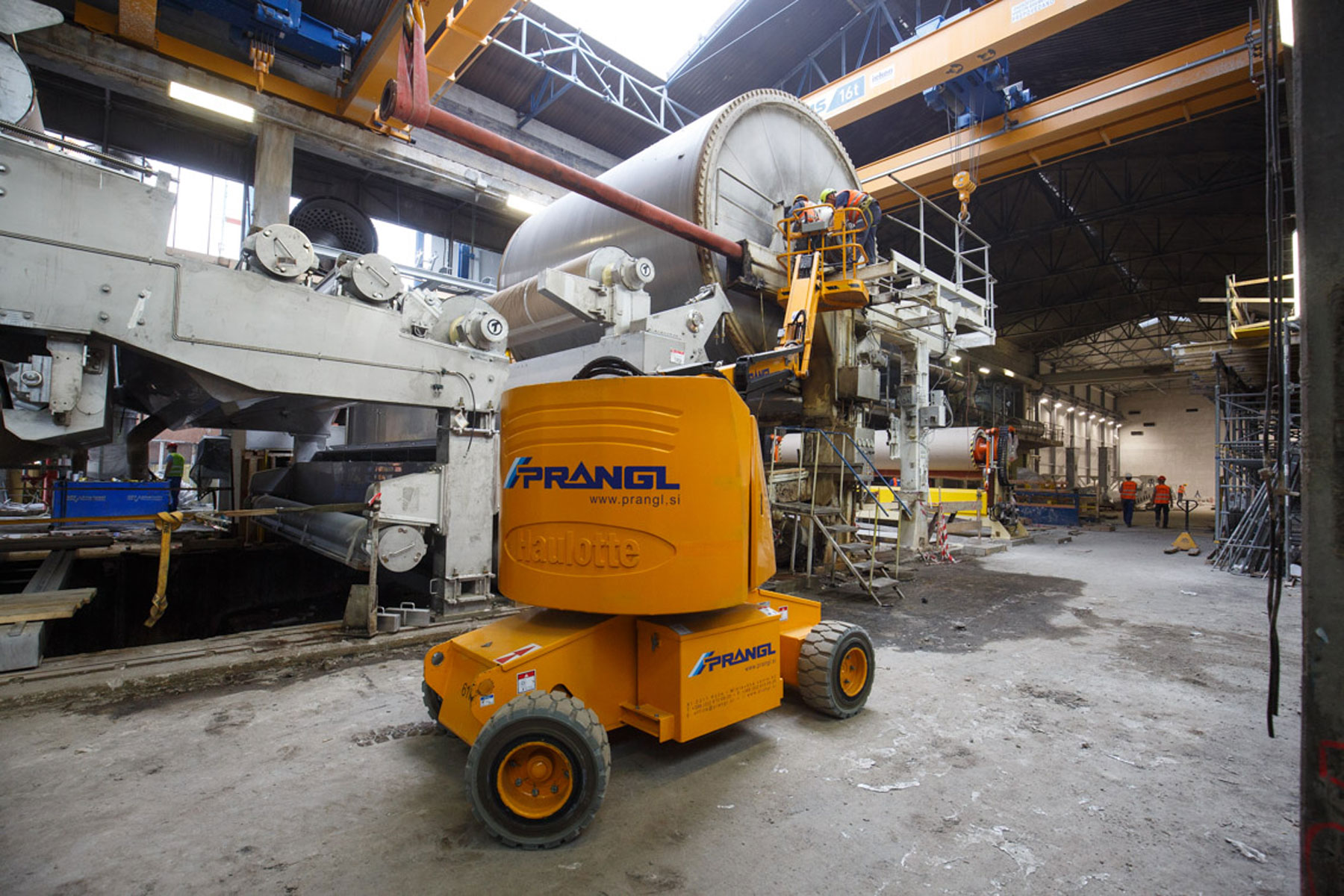Wind farm
Damir Kralj
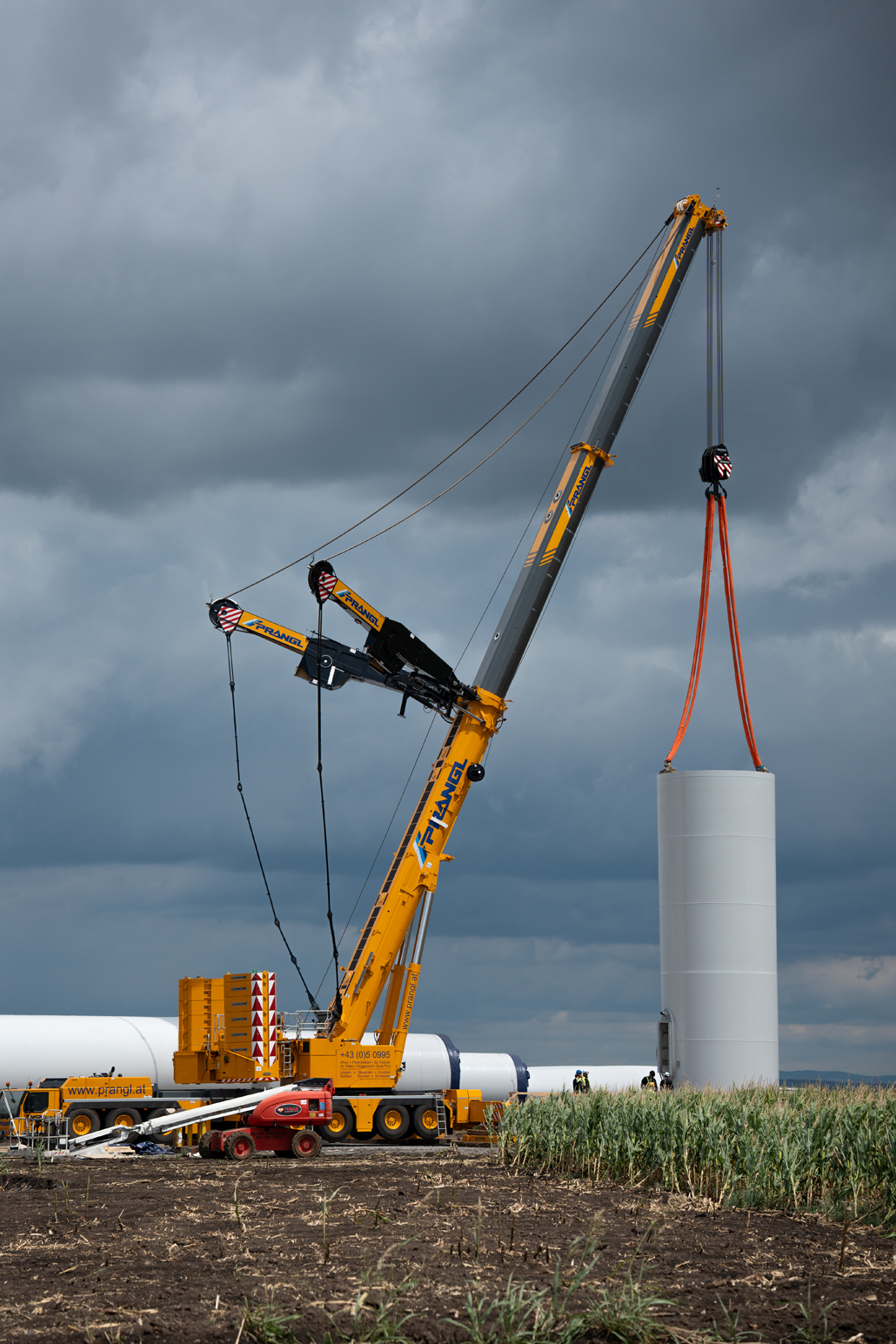
The challenge
Unloading, pre-assembly of two tower segments
A great deal of experience and finesse is required to install wind turbines. Since Prangl has both, the experts in yellow were hired to unload all the parts - a total of six tower elements, nacelle, drive train, hub and rotor blades - and to pre-assemble two tower sections.
Our solution
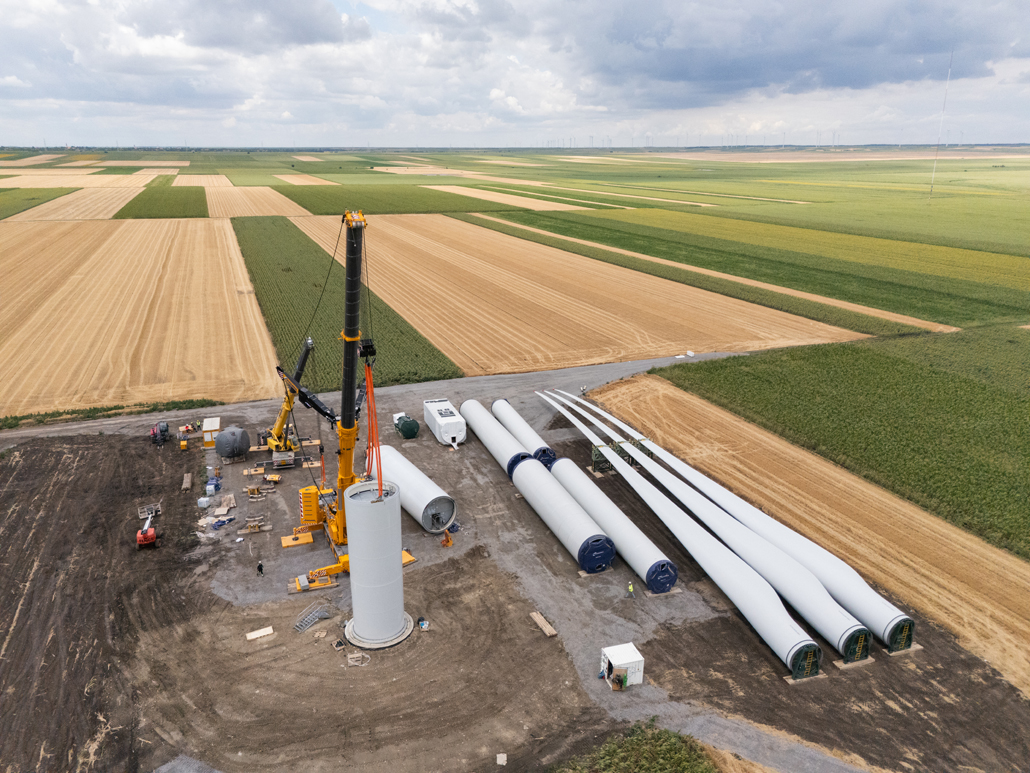
Efficient equipment
The Čibuk wind farm in Serbia is currently being expanded. Čibuk II is situated to the south-east of the existing site and is being built around 40 kilometres outside Belgrade near Bavanište in the municipality of Kovin. The 22 wind turbines boast an output of 155 MW. Electricity for over 62,000 households is generated with 400,000 MWh annually, resulting in savings of around 311,200 tonnes of carbon dioxide. Prangl was commissioned to unload the parts of the wind turbines and carry out the assembly of two tower sections in the most efficient way possible. It was absolutely essential to select the right equipment to achieve this.
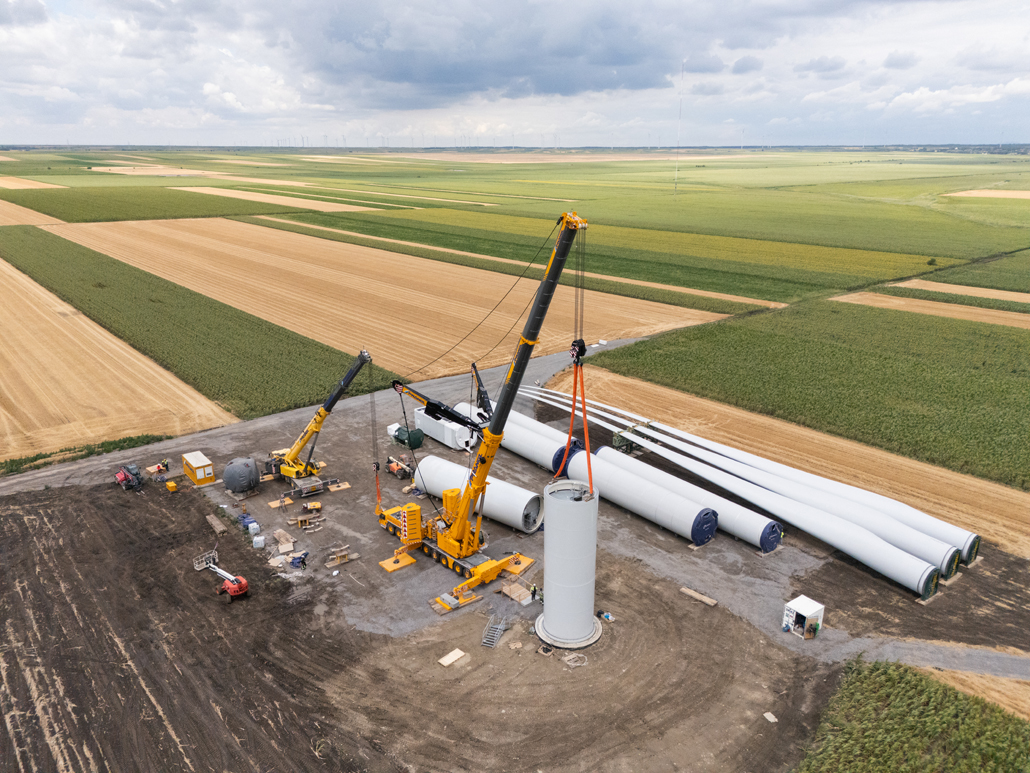
700 tonne telescopic crane
Since the weight of two tower sections is too heavy, a 700 tonne telescopic crane turned out to be the perfect choice in this case. It was selected as the main crane on account of its specifications and economic efficiency. It can be moved very quickly and consequently increases the speed of processes. The use of a larger telescopic or lattice boom crane would have been more costly and time-consuming for the customer. This is because these cranes feature more equipment, work more slowly and are also slower to move.
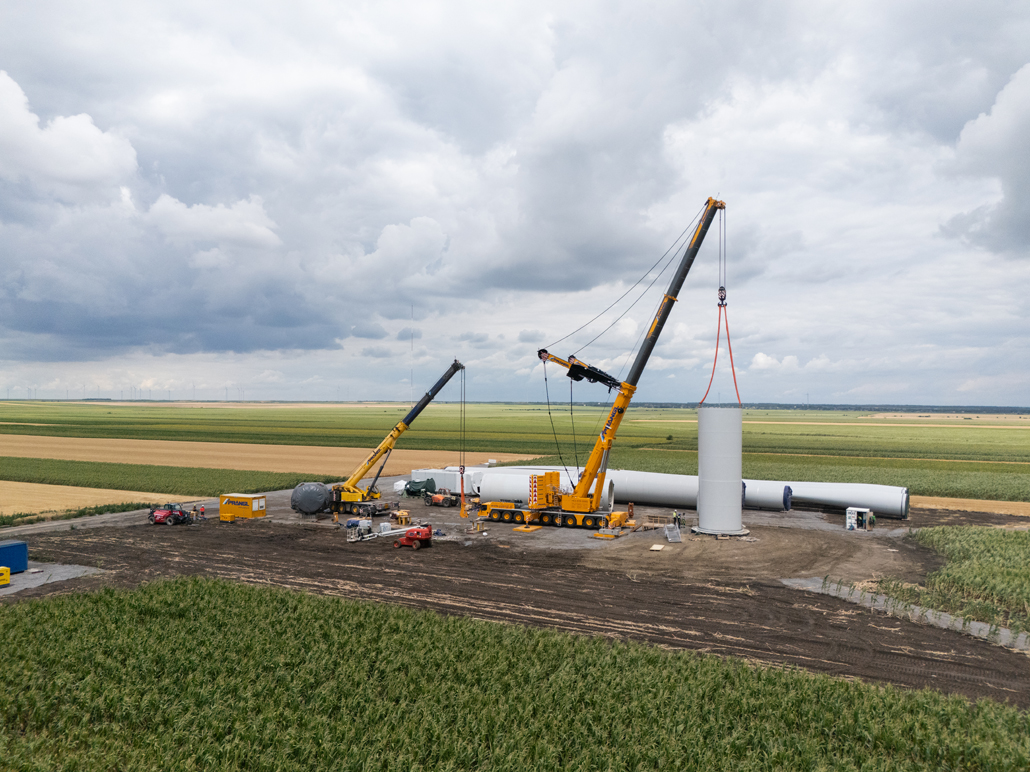
Synchronised processes
In addition to the 700-tonne crane, a 200-tonne mobile crane and a telehandler with a maximum lifting height of 12.5 metres, a maximum reach of 8.7 metres as well as a load capacity of 4 tonnes were also deployed. The work process involved was the same for every wind turbine: The first day saw the four uppermost tower elements (between 16.1 and 24.6 metres high and weighing between 44.1 and 98.9 tonnes), the nacelle (73.9 tonnes), the drive train (81.9 tonnes), the hub (56.3 tonnes) and the three rotors (80.2 metres long and weighing 26.9 tonnes) delivered to the construction site and unloaded by means of the two cranes.
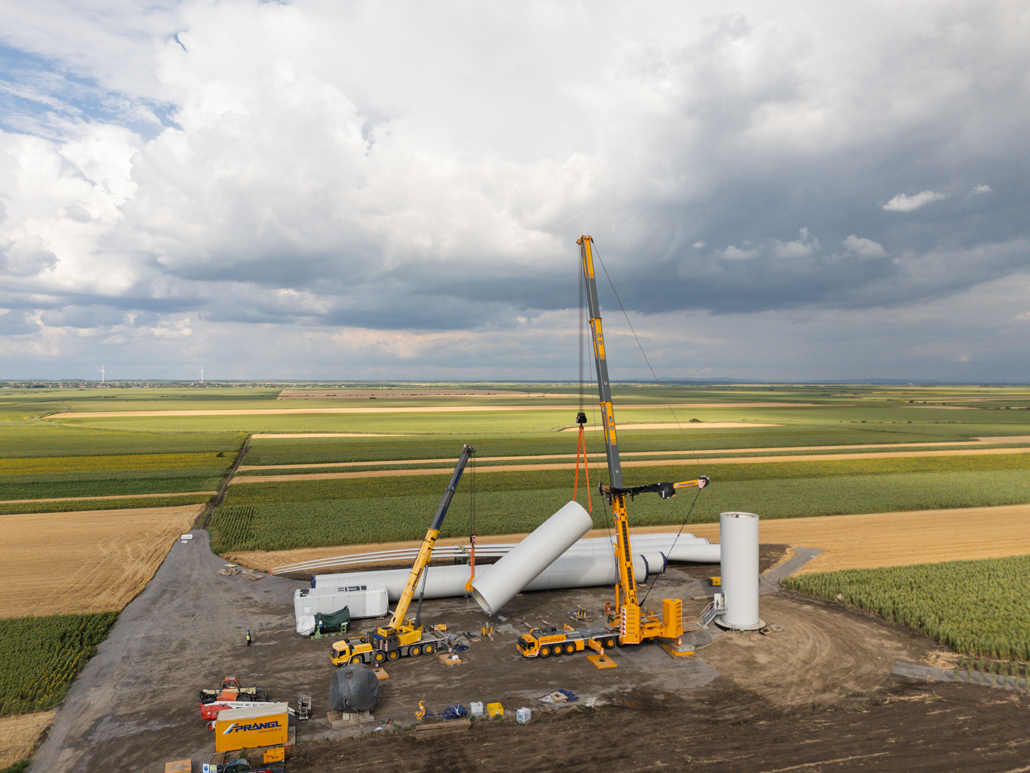
Pre-assembly in tandem lift
The second day focused on the pre-installation of the two lowest tower elements. They were brought to the site in the same way as the other parts. The 700-tonne telescopic crane and the 200-tonne mobile crane then lifted the base tower section with a height of 14.1 metres and a weight of 97.5 tonnes in a tandem lift before turning it upright. The 700-tonne unit lifted the element into place, where it was installed. The next tower element (13.0 metres high, 98.4 tonnes) was handled in the same way. It was placed on the base tower section with millimetre precision and assembled there.
Services
Industry

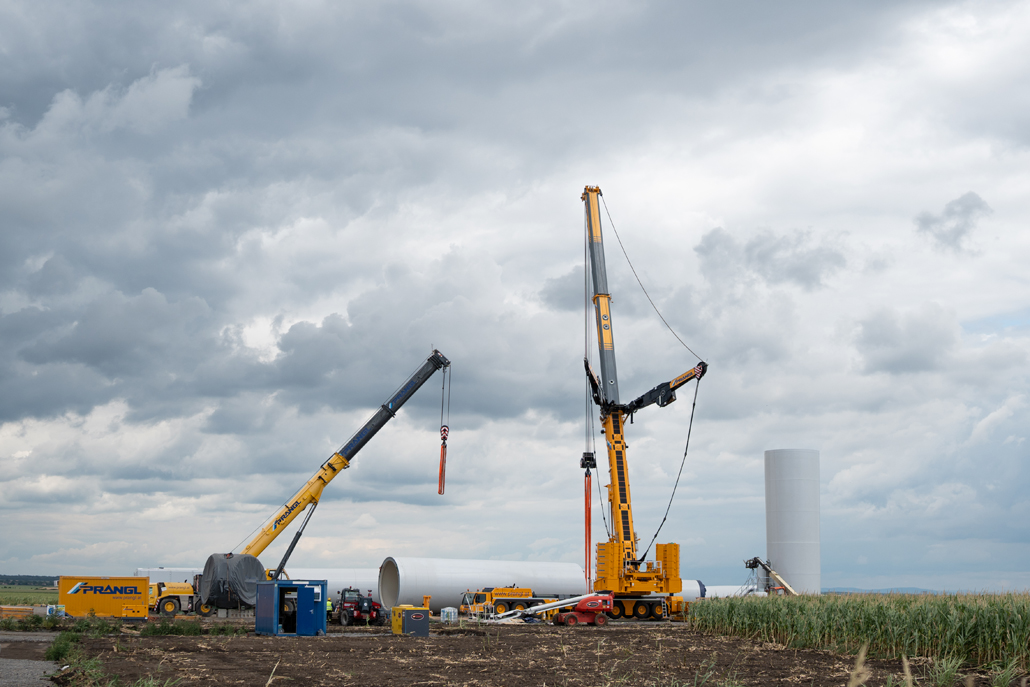
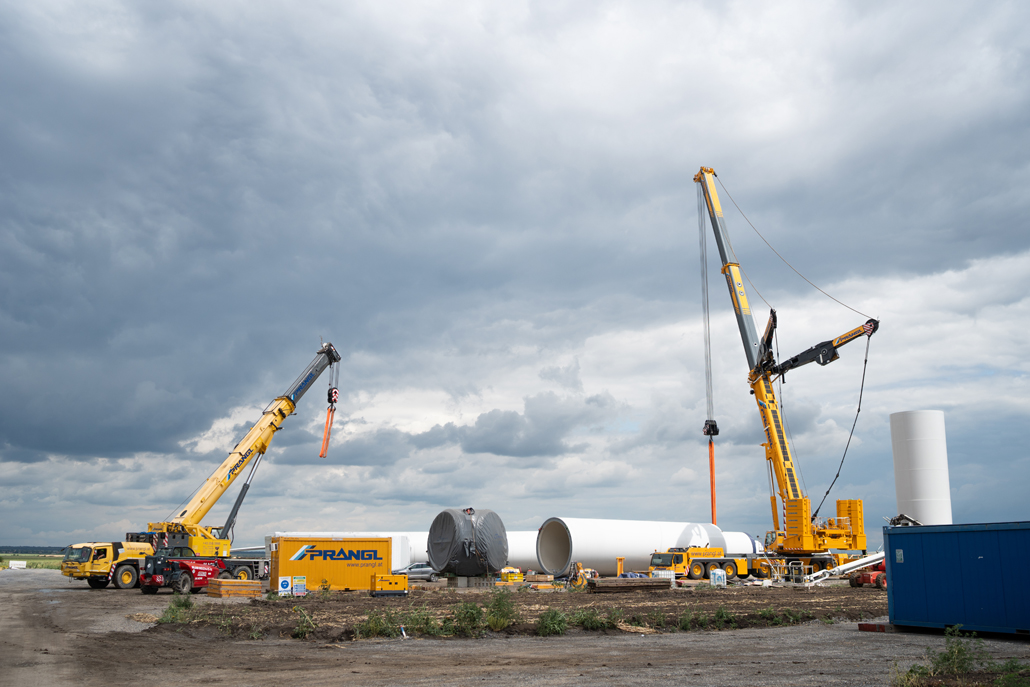
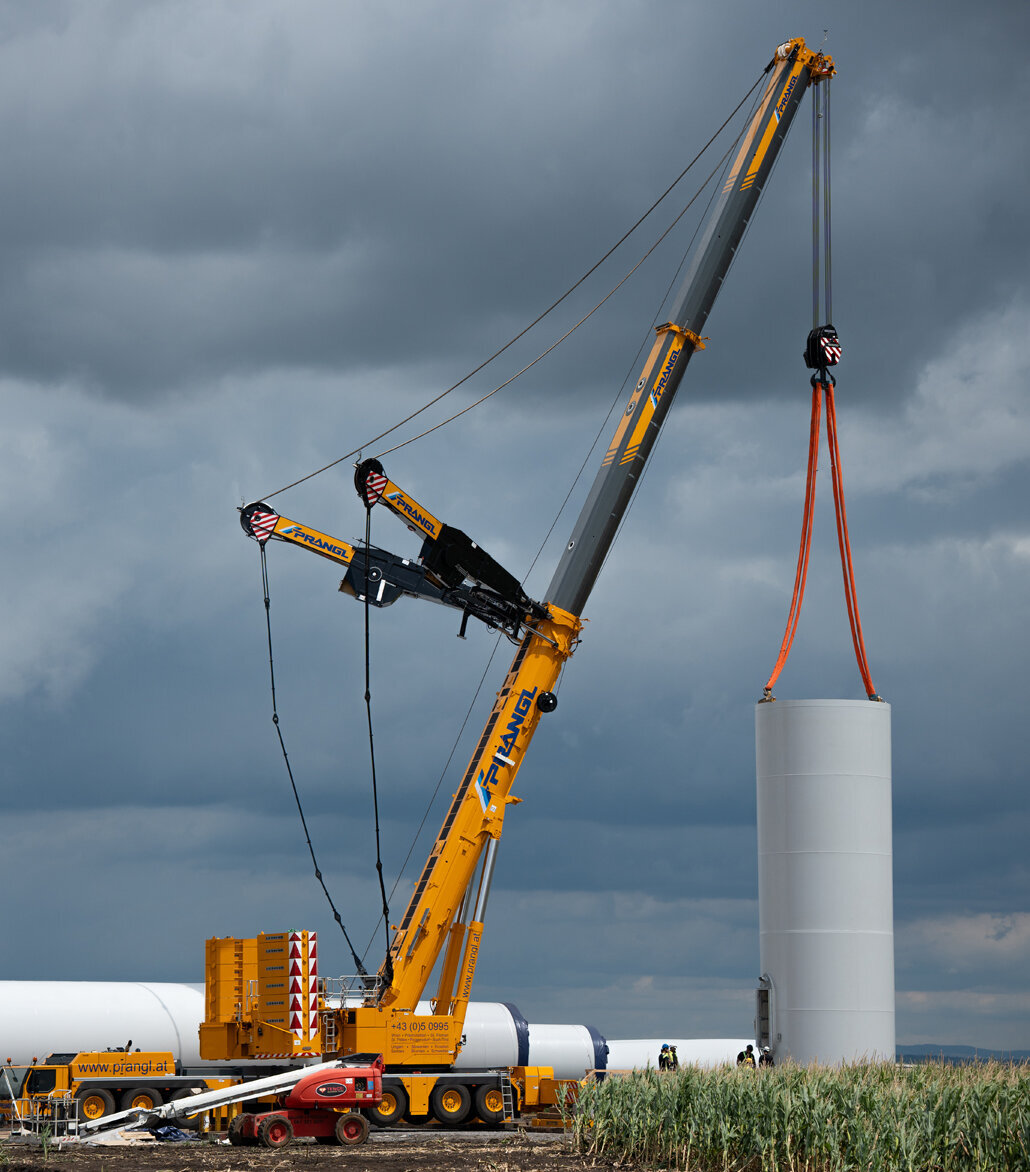
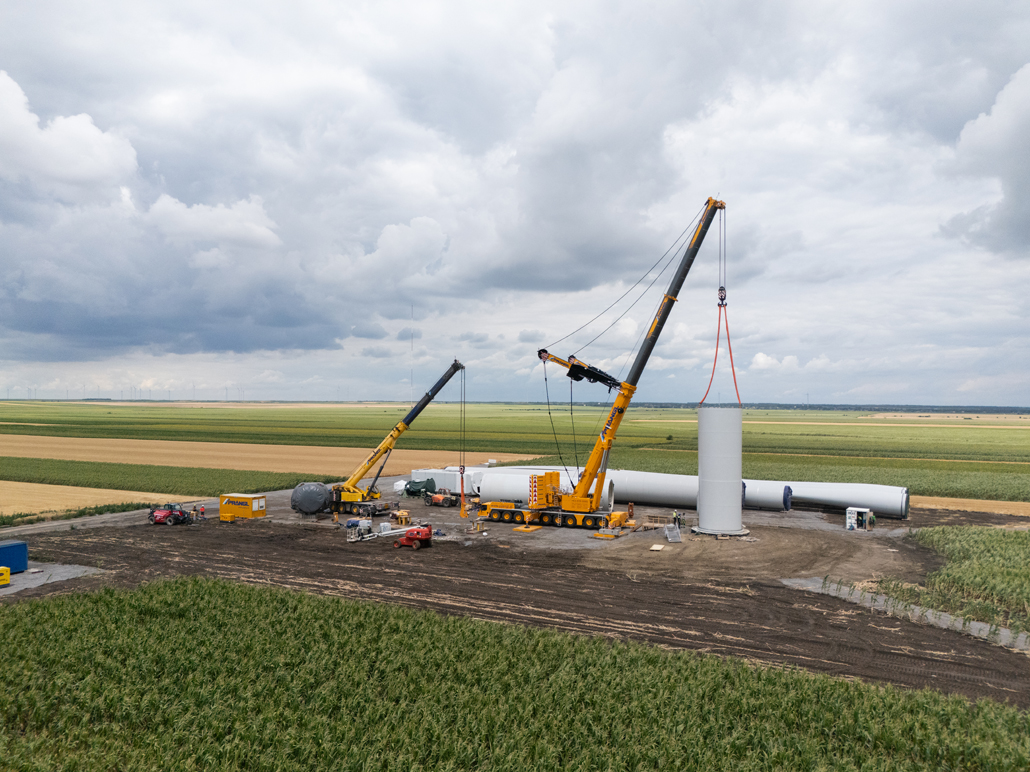
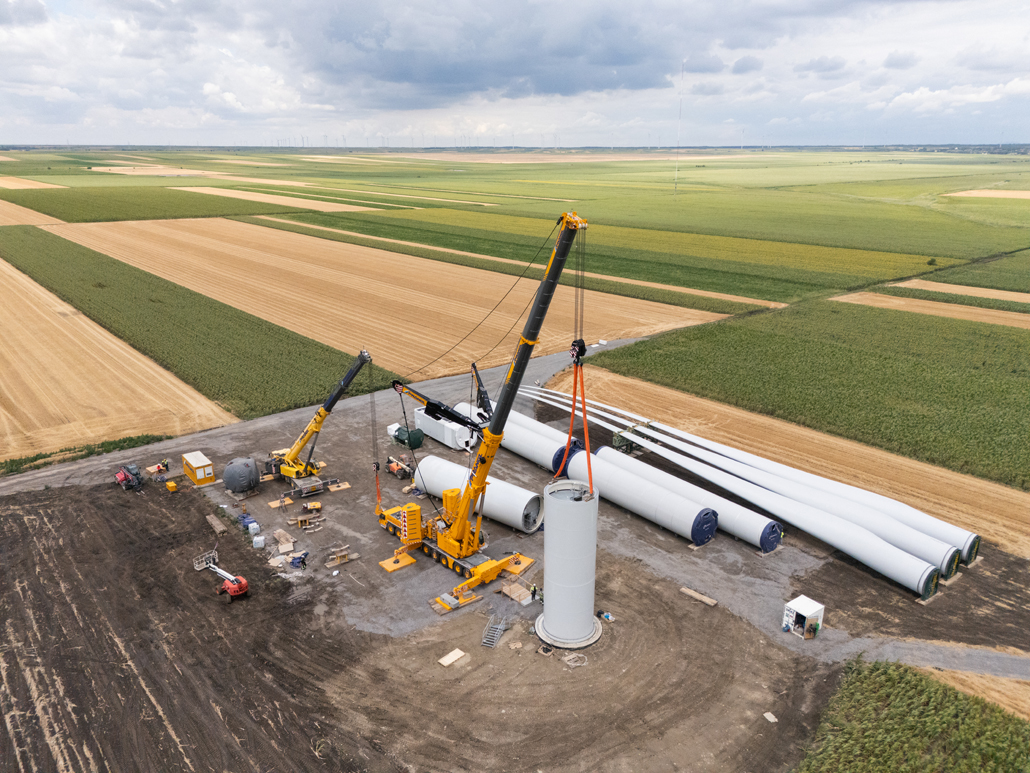
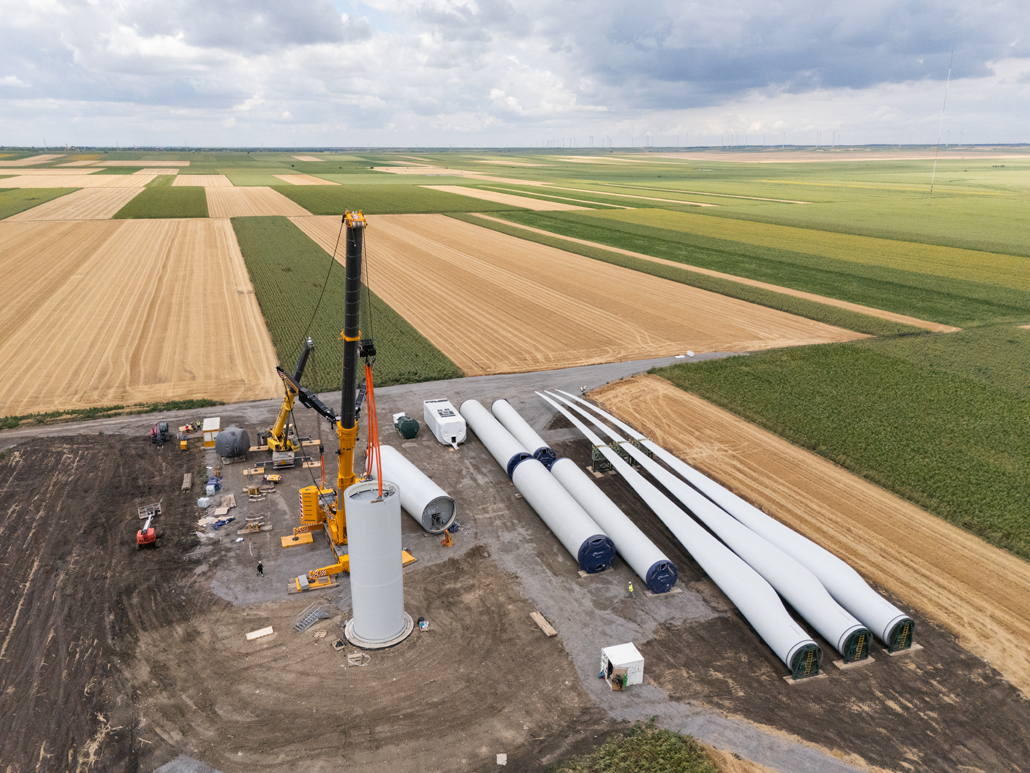
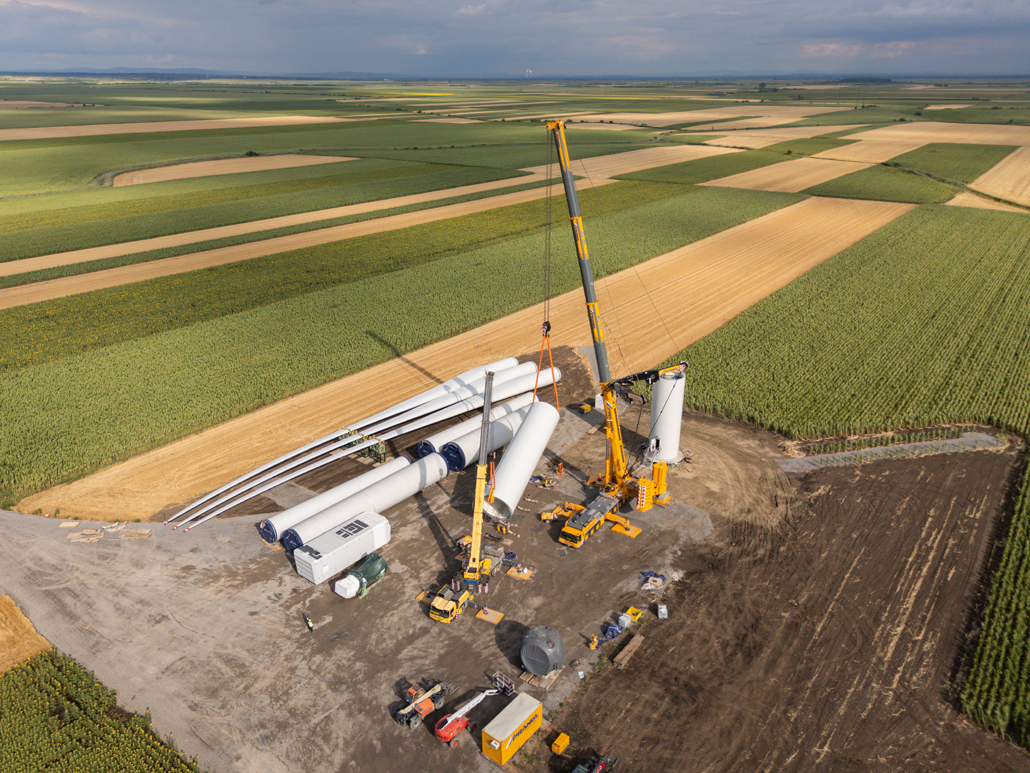

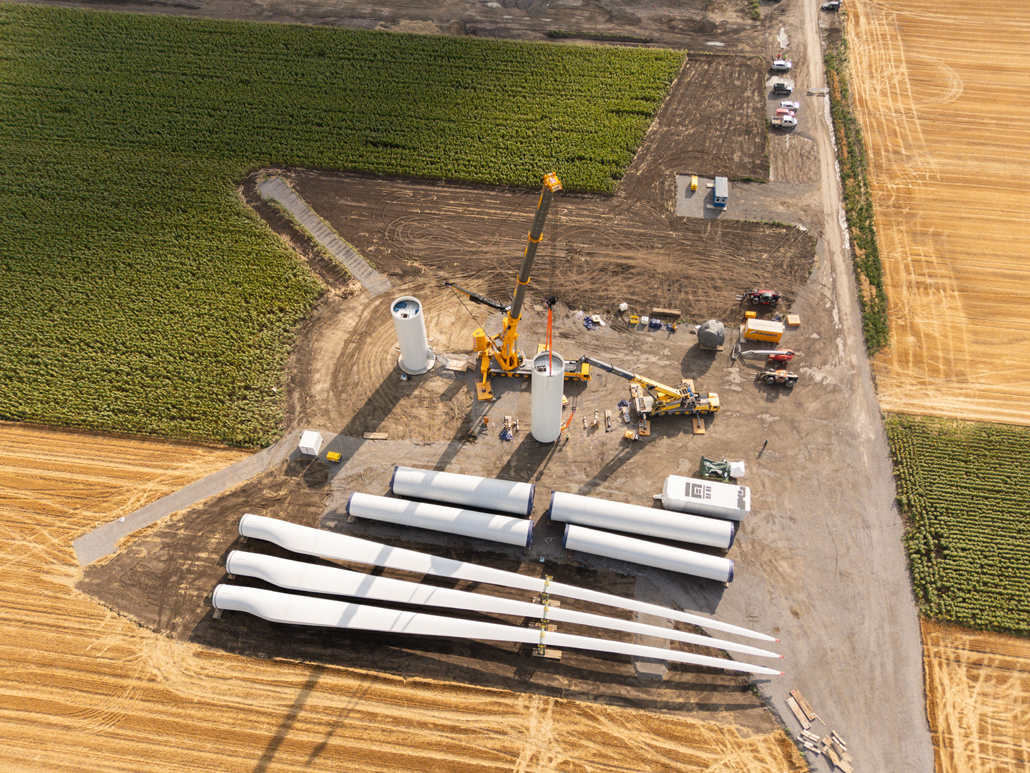
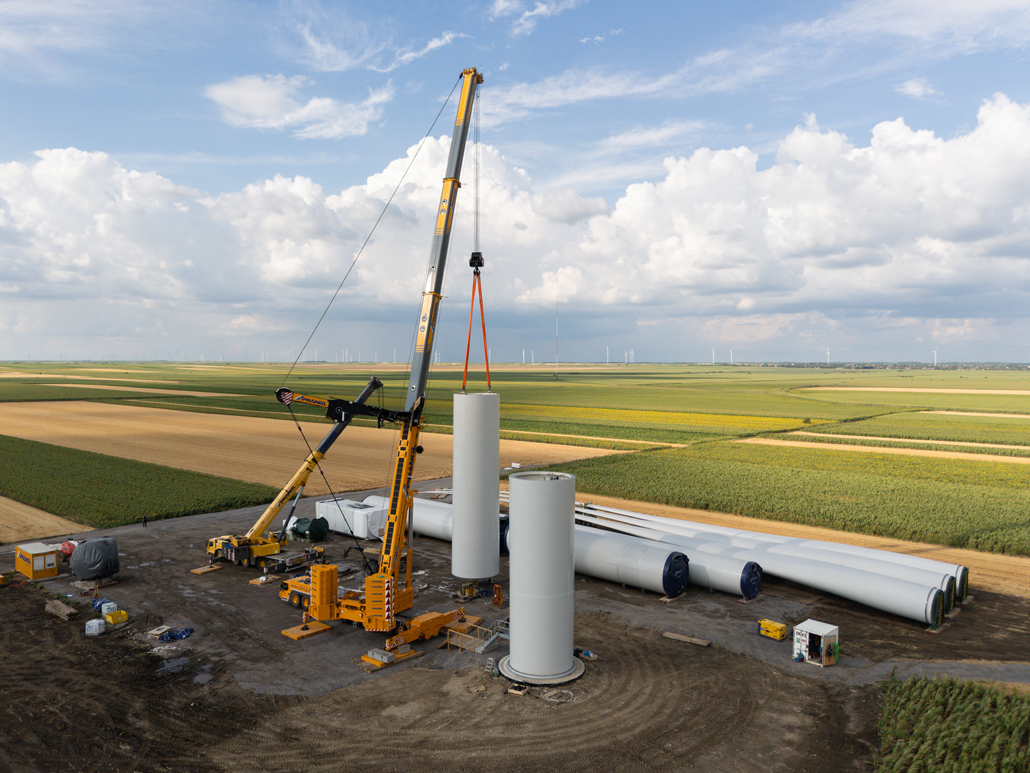
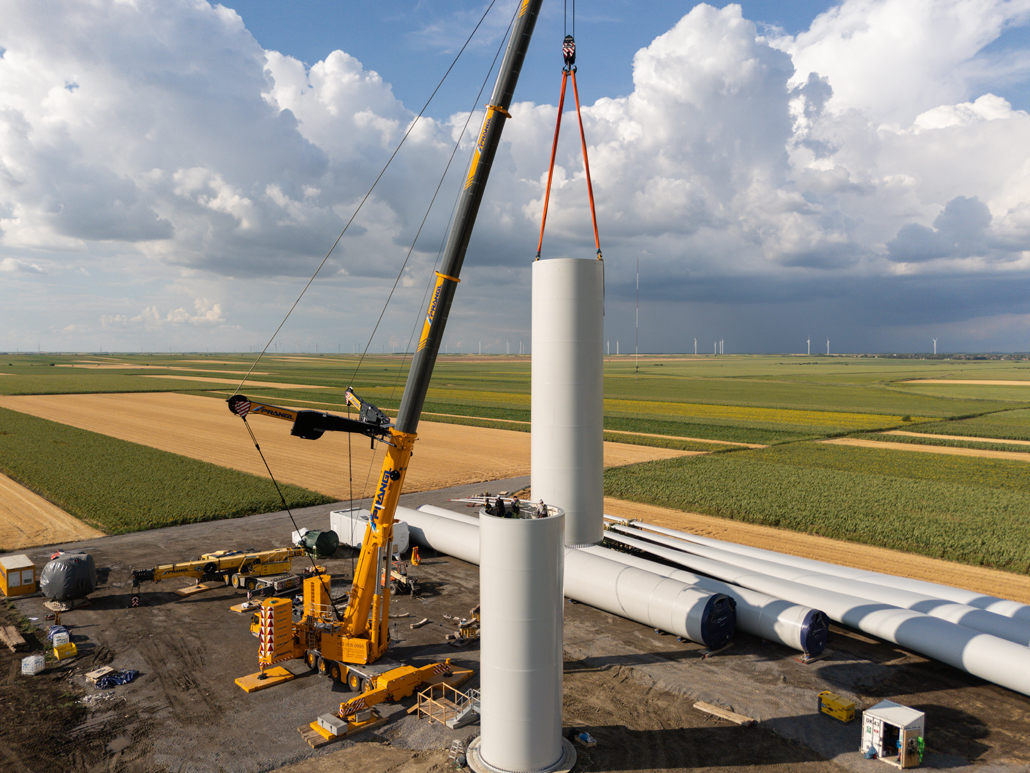
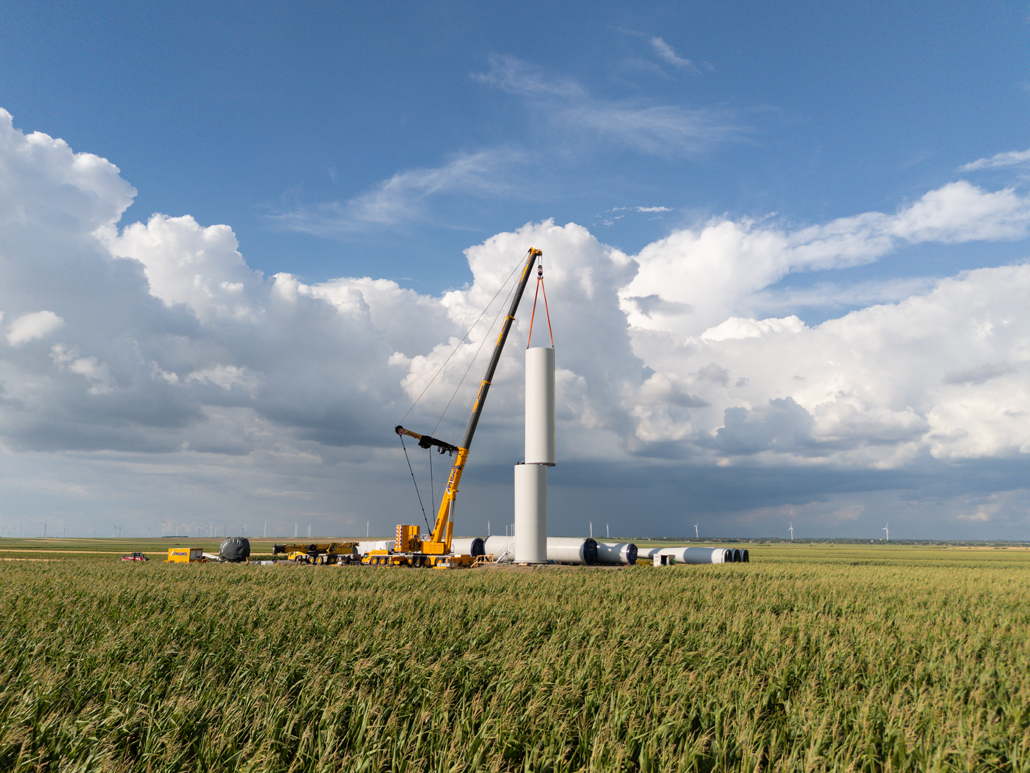


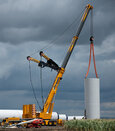









![[Translate to EN:] Distributionszentrum, Teleskopkrane](/fileadmin/content/projekte/2021/02_Distributionslager/Galerie/Teaser_A_IMG_9284-124.jpg)
